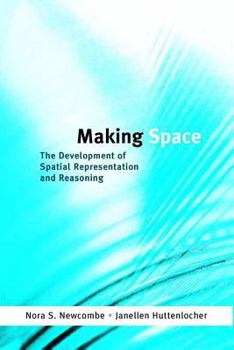Making Space: The Development of Spatial Representation and Reasoning
(Part of the Learning, Development, and Conceptual Change Series)
Select Format
Select Condition 
Book Overview
Spatial competence is a central aspect of human adaptation. To understand human cognitive functioning, we must understand how people code the locations of things, how they navigate in the world, and how they represent and mentally manipulate spatial information. Until recently three approaches have dominated thinking about spatial development. Followers of Piaget claim that infants are born without knowledge of space or a conception of permanent objects that occupy space. They develop such knowledge through experience and manipulation of their environment. Nativists suggest that the essential aspects of spatial understanding are innate and that biological maturation of specific brain areas can account for whatever aspects of spatial development are not accounted for at birth. The Vygotskan approach emphasizes the cultural transmission of spatial skills.
Nora Newcombe and Janellen Huttenlocher argue for an interactionist approach to spatial development that incorporates and integrates essential insights of the classic three approaches. They show how biological preparedness interacts with the spatial environment that infants encounter after birth to create spatial development and mature spatial competence. Topics covered include spatial coding during infancy and childhood; the early origins of coding distance in continuous space, of coding location with respect to distal external landmarks, and of hierarchical combination of information; the mental processes that operate on stored spatial information; spatial information as encoded in models and maps; and spatial information as encoded in language. In conclusion, the authors discuss their account of spatial development in relation to various approaches to cognitive development in other domains, including quantitative development, theory of mind, and language acquisition.





